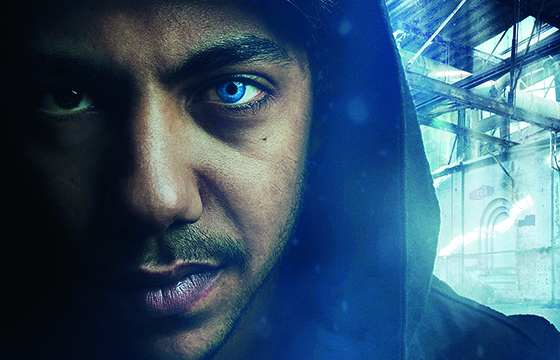
Epic genre series Cleverman is selected for Berlinale, not only commending the quality of Indigenous storytelling, but changing attitudes toward TV too.

Epic genre series Cleverman is selected for Berlinale, not only commending the quality of Indigenous storytelling, but changing attitudes toward TV too.
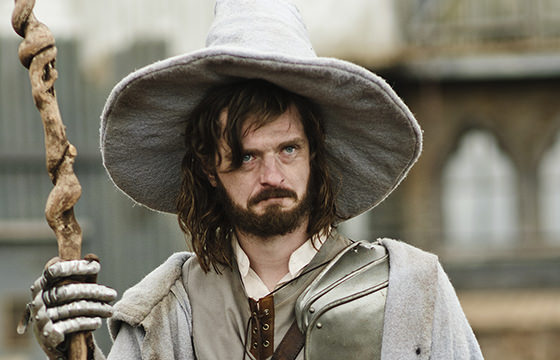
A new generation of Aussies are flocking to the web to create fearless, gut-busting comedy, and grabbing the attention of decision-makers and fans alike.
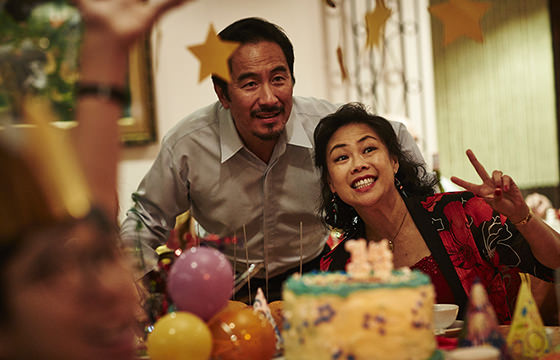
Diversity shouldn’t be the central focus of a series, but simply exist within a moving, engaging and universal story, says Tony Ayres.
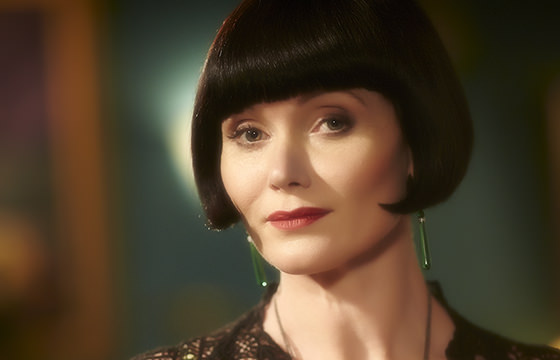
As the cost and risk of creating home-grown TV increases, Screen Australia’s role in supporting locally-made series is more vital than ever.
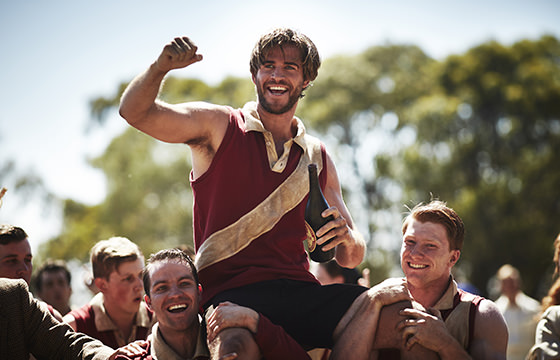
2015 was the year that Australian audiences showed how much demand there is to see local voices and stories on screen – whether watching in a cinema, on a tablet, or their mobile phones. Here’s a rundown of the top performers in film, television, documentary and multiplatform:
FILM
Where to start? It’s hard to go past the fact that it was a record-breaking year for Australian film (not adjusted for inflation), with a whopping $88 million in box office receipts. Additionally, 4 out of the top 5 Australian performers earned more than $10 million and 9 out of the top 10 passed the million dollar mark, showing just how much Australians want to see home-grown stories.
Leading the pack was Mad Max: Fury Road. Dr George Miller’s dystopian road movie with a feminist twist pulled in $21.69 million at the local box office, won eight AACTA Awards, and has been already garnering Oscar buzz.
The film adaptation of Rosalie Ham’s The Dressmaker was hot on its heels in the numbers race, with a final tally for 2015 at $18.56 million. Family flick Oddball took third spot with $11.04 million, while Russell Crowe’s The Water Diviner came in at no. 4 with $10.15 million (not including the $5 or so million it earned from Boxing Day to New Year’s Eve in 2014).
The appetite for locally-made family films is as strong as ever. As well as Oddball, kids and their families clamoured to see Paper Planes (which earned $9.65 million and came in at number five) as well as Australia’s favourite koala with Blinky Bill The Movie ($2.91 million) coming in at number seven.
Australian dramas secured a spot in our hearts including Michael Caton’s stirring performance in Last Cab to Darwin, which helped drive the home-grown flick into the sixth highest place ($7.39 million).
Record-breaking documentary That Sugar Film finished its cinematic run on a high, becoming the highest ever box office for a doco (excluding IMAX) and coming in at 8th with $1.71 million.
| TITLE | 2015 EARNINGS |
| MAD MAX: FURY ROAD | $21,685,344 |
| THE DRESSMAKER | $18,557,934 |
| ODDBALL | $11,043,604 |
| THE WATER DIVINER | $10,148,891 |
| PAPER PLANES | $9,654,965 |
| LAST CAB TO DARWIN | $7,390,306 |
| BLINKY BILL THE MOVIE | $2,906,981 |
| THAT SUGAR FILM | $1,708,908 |
| HOLDING THE MAN | $1,250,540 |
| ALEX & EVE | $536,475 |
Source: MPDAA
TELEVISION
When Google released its top searches for 2015, the list of most-searched for Australians included serial killer Ivan Milat (no. 3) and Rio singer Peter Allen (no. 5).
Perhaps it had something to do with the two top rating TV dramas of the year – Seven’s Catching Milat and Peter Allen: Not the Boy Next Door.
An average 2.47 million viewers (metro + regional)* tuned into watch the two-part true crime biopic Catching Milat, making it the highest rated show on Australian screens this year. Meanwhile an average of 2.2 million viewers (metro + regional)** marvelled at Joel Jackson’s transformative performance in Peter Allen: Not the Boy Next Door, which took 2nd spot on the ratings chart for TV drama.
Biopics did well, with Nine’s House of Hancock coming in at no. 3 with an average of 2.2 million viewers across the two episodes (metro + regional) ***.
The ABC series The Doctor Blake Mysteries Series 3 kept viewers riveted, with an average of 1.6 million viewers (metro + regional)**** across the season.
And at no. 5 was Seven’s six-part thriller television series Winter. Based on the telemovie The Killing Field averaged 1.6 million pairs of eyeballs (metro + regional)*****.
But ratings aside, this year also saw Miss Fisher’s Murder Mysteries gain a cult following in the US, while Top of the Lake sold in more than 71 territories, becoming Australia’s #1 selling TV drama series internationally.
Meanwhile in December, a US TV series based on acclaimed Australian film Animal Kingdom was picked up by US cable network TNT – the same month it was announced ABC series The Code would be remade for US audiences.
These series follow in the footseps of other Australian series that have found success beyond on shores, including the US remake of Secrets & Lies. The show was greenlit for a second series on the back of its solid ratings earlier in 2015, proving the power of exceptional Australian storytelling.
DOCUMENTARY
This could be defined as a year that docos did things differently – hitting their target audiences and making a noise.
From That Sugar Film to Frackman to Gayby Baby, Tyke Elephant Outlaw and Struggle Street, the reach of Australian documentaries has been bigger than ever this year. These inspiring stories stimulated conversations and aided change across the country, from Sydney to tiny rural towns. Don’t have a cinema in town? No matter. Films like Frackman and That Sugar Film offered people the opportunity to host their own community screenings at any venue. Meanwhile companies such as TUGG and Fan-Force allowed documentaries to reach audiences through one-off screenings at local cinemas – which could be organised by individuals or community groups.
Post-screening Q&As also furthered the success of documentaries, where the film’s passionate creators took to the stage after the credits rolled to get people talking (and sometimes engaging in ‘robust dialogue’). That Sugar Film’s director/human guinea pig Damon Gameau embarked on a relentless Q&A tour to get the word out, and the film went on to break the box office record for Australian documentaries (excluding IMAX), earning $1.71 million.
Frackman introduced former construction worker and current anti-fracking activist Dayne Pratzky onscreen and off as he attended many screenings around the country to answer questions raised in the film. Frackman (who along with Gayby Baby was also supported by Good Pitch) also had campaign community GetUp! on board from the start, who helped to generate a wide audience for the project, before going even wider with a TUGG release. It resulted in more than 80 one-off TUGG screenings being organised everywhere from Sydney, to remote areas in the Northern Territory, to NSW towns such as Coonabarabran, allowing the whole country to get in on the hot-button issue.
Similarly Gayby Baby had more than 30 TUGG screenings across the country, encouraging positive debates about diversity and the meaning of family in Australia. Its reach also stretched overseas, when it was screened at Hot Docs, a prestigious international documentary film festival in Toronto.
Meanwhile on Australian television screens, SBS’s three-part series Struggle Street became the highest rating documentary ever on the network, generating huge amounts of press and social media commentary as audiences and critics became divided by the controversial doco. Struggle Street was shot in the west-Sydney suburb of Mt Druitt and placed a spotlight on socio-economic disadvantaged Australians. The series engaged almost 1.5 million viewers (metro + regional)******, showing just how keen Australians were to be involved in the conversation around the water cooler and online.
Other alternative release patterns such as Netflix have also given a boost for documentaries such as Tyke Elephant Outlaw. Initially, the documentary by directors Susan Lambert and Stefan Moore screened at film festivals around the globe, even helping change laws in Hawaii involving the use of animals in entertainment (hyperlink to blog story). It was then bought by Netflix and its release on the streaming service in Australia and the US has expanded its reach, with an upcoming international release set to further spread the word.
MULTIPLATFORM
Australians have proved to be at the forefront of content, gaining the attention of viewers across the globe with their innovative and hilarious online stories.
In 2015, cult online video creators RackaRacka gave us Versus which attracted close to 60 million views on YouTube, making it Australia’s most successful web series launched this year.
Another hit series The Katering Show not only reeled in the audiences, but found national and international acclaim, winning gongs at both the Online Video Awards Australia and New York Television Festival. Its popularity has meant Season Two will premiere on ABC iview in 2016 (see the ‘What’s Ahead’ section below for more).
Were you one of the 8.5 million + people who saw ACTIVEWEAR? The clip from Skit Box (who were a part of Screen Australia and ABC’s Fresh Blood initiative), went gangbusters on Facebook and YouTube earlier this year and became a global hit.
YouTube star John Luc also ventured into making his first narrative comedy outing with MyChonny Moves In, which generated 1.37 million views across the series on his YouTube channel.
WHAT’S AHEAD IN 2016
The next year is set to be a big one, particularly with the number of original scripted TV dramas coming our way.
First off the bat will be SBS six-part series The Family Law, a comedy based on Benjamin Law’s memoir and starring Trystan Go as 14-year-old Ben – the middle child in a Chinese-Australian family. Meanwhile Nine’s Here Come the Habibs! is another comedy that promises to show Australia’s diversity alongside laugh-out-loud humour.
Aussie drama is also set to shine with Jessica Mauboy starring in her first television role in Seven’s The Secret Daughter, who also have Rebecca Gibney’s series Wanted in their slate. There’s a lot of buzz surrounding ABC’s upcoming Australian-New Zealand production Cleverman, which has been working with Bangarra Dance Company’s Jacob Nash and Oscar-winning WETA Workshop to bring the world to life. Starring big name stars such as Frances O’Connor and Game of Thrones’ Iain Glenn and local talent including Deborah Mailman and Ryan Corr, it will also air in the US next year.
ABC TV also has adaptation Barracuda, based on Christos Tsiolkas’ novel, a four-part series following a young swimmer on a scholarship at an elite private boys’ school. Meanwhile, biopics are still going strong with Ten’s Brock and Seven’s Molly on their way to screens, as well as two programs about Paul Hogan on two different networks. After the success of series such as No Activity, streaming service Stan is also backing more original Australian content, commissioning the television series Wolf Creek.
A kind of multiplatform-meets-TV crossover is the upcoming Wizards of Aus. The brainchild of writer/director/actor Michael Shanks, who curates the popular YouTube channel Timtimfed, has been commissioned by SBS 2 and stars Shanks as a wizard who gets fed up and leaves the Magical Realm for Melbourne’s western suburbs. It’s already generating fan interest, with the trailer notching up 418,000 in the 48 hours after its release.
And the appetite for internet sensation The Katering Show means the second series will air on ABC iview, along with series 2 of Soul Mates – the latest from Bondi Hipsters sensations Christiaan Van Vuuren and Nick Boshier.
Following a bumper 2015 in film, next year we’ll see the release of the long-awaited Lion, starring Nicole Kidman, and sequel RED DOG: True Blue. Critically-acclaimed documentary Sherpa will release following its festival run, while book-to-movie adaptation Jasper Jones, starring Toni Collette and Hugo Weaving, is also on the horizon, along with Ivan Sen’s Mystery Road follow-up, Goldstone and Ibsen adaptation The Daughter with Geoffrey Rush.
This is just a taster of what’s in store next year, with the slate across the board packed with plenty of TV, documentaries, features and digital series to entertain, inform and inspire us. And as the ways we consume content continues to evolve, more high-quality home-grown stories are finding new ways to connect with audiences. Let 2016 be a year of discovery for us all.
Source: OzTAM and RegionalTAM, 5-city-metro, combined markets, total people, consolidated
* Metro viewers = 1.656 million.
** Metro viewers = 1.5 million.
*** Metro viewers = 1.6 million.
**** Metro viewers = 1.1 million.
***** Metro viewers = 1.1 million.
****** Metro viewers = 1.06 million.
Metropolitan data is copyright to OzTAM and Regional data is copyright to RegionalTAM and may not be reproduced, published or communicated in whole or part without the prior consent of OzTAM or RegionalTAM.
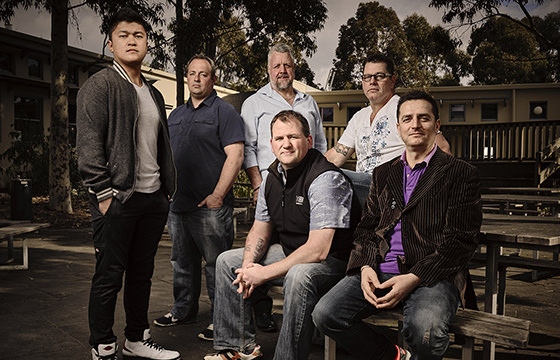
A group of men shake hands, sipping cups of coffee, catching up on each other’s week. Some have tattoos, some are clean shaven, while others sit in silence, hands in pockets. They’re all there, in the same room in Melbourne, for Heavy M.E.T.A.L.
No, not the music. The ‘M.E.T.A.L’ actually stands for Men’s Education Towards Anger and Life. Because each of these men have one thing in common: they have all arrived at this sixteen-week course, aimed at fathers who are, or risk being, perpetrators of family violence. And they are there to change their attitudes and behaviour towards women.
But there’s another person in the room. A young woman, armed with a camera. Director Sophie Wiesner. The Australian Film Television and Radio School (AFTRS) graduate has been following the stories these men, filming over 100 hours of footage, which after four months, she will begin to turn into the documentary Call Me Dad.
For Wiesner, there’s something personal about Call Me Dad. The idea came to her while she was interviewing people at a father’s centre about quitting smoking for a cancer brochure and something about it stuck.
“What made me persist with it was there is family violence in my own family,” she says.
“My mother’s father was very abusive and I grew up with stories about his violence and alcoholism and so I guess on some level I really wanted to know what might have been going on for him and their family.”
It took some time and a few false starts before they were able to find a service provider like Heavy M.E.T.A.L and founder/facilitator David Nugent, who was willing to work with them.
“I always thought there was this tremendous appetite from participants to share their story. The challenge was with the organisations that work with these participants who were understandably very protective of the families they work with, because in many cases they’re very vulnerable,” Wiesner says.
Call Me Dad, which airs on ABC on 26 November, follows the stories of a group of abusive fathers, and several in particular, as Heavy M.E.T.A.L focuses on making them accountable for their behaviour.
The timing is no coincidence.
November is Domestic and Family Violence Prevention Month and arrives with a wave of support and discussion behind it.
It’s hard to decipher exactly when domestic violence entered the zeitgeist, except that it’s clear it has.
In January, Rosie Batty was awarded Australian of the Year for giving a voice to thousands of victims of domestic violence through her own tragic story and her continued championing of efforts to stop violence in homes.
It’s an issue Prime Minister Malcolm Turnbull turned his sights to in the first weeks of his leadership, saying in late September that violence against women “one of the great shames of Australia. It is a national disgrace”. He said disrespecting women was “unAustralian” and called for a cultural change.
For Call Me Dad, it became clear the film had greater impact than they first imagined when it was selected for the inaugural Good Pitch Australia in 2014 – an event that brings filmmakers like Wiesner together with NGOs, foundations, philanthropists, social entrepreneurs, and potential corporate and brand partners.
“That really clarified the intention and galvanised the project as something that was bigger than the sum of its parts,” Screen Australia’s Documentary Investment/Development Manager Sam Griffin says.
With the partnership of Good Pitch and the Documentary Australian Foundation, Wiesner says they have an even greater chance of enacting change.
She says they are launching a campaign so that Call Me Dad will be available for people to host their own screenings, but also to encourage groups to connect with partners Fair Agenda and White Ribbon.
“This screening campaign will make sure the film has impact and that’s an amazing opportunity to catalyse some positive change,” she says.
For Griffin, getting behind a story like Call Me Dad from early-on was almost a no-brainer.
Griffin had first met Wiesner during her time at AFTRS, saying it was clear back then she was talented. But it’s that combination of Call Me Dad’s story and the lengths that Wiesner had gone to achieve it that make it so significant.
“It’s an important film; it’s an important issue and Sophie had put in a lot of work and gained the trust of these men, which we acknowledge is not easy to do,” she says.
“Here’s a group of men who are willing to talk about their feelings and acknowledge the challenges in doing so and that is a rare thing, but they’re also willing to do that on camera. That’s really a testament to Sophie’s skills as a director, and as a person.
Wiesner says she never felt in danger, but was always mindful of her safety during the months of filming in Melbourne. She says she has kept in contact with Nugent and the men featured within the film and credit them for taking a risk and trusting her in the first place.
“In each case life has continued for them and there have been positive and negative developments,” she says. “Change is actually slow and often doesn’t move in just one direction…. My observation is change is something they need to commit to lifelong really and it’s not something where people can think that they’re fixed – it’s consistent work.”
After so long talking about Call Me Dad, Wiesner is keen to finally get the film in front of audiences. She says all involved have seen the doco and are on the whole supportive, but understandably nervous about the response.
For Wiesner, Call Me Dad deepens our understanding of family violence: its impact and the types of abuse that can characterise a relationship.
“I think it points towards one of many tools that are needed to stop the harm,” she says.
“Working with perpetrators is really difficult and complex work but unless we look at the people who are choosing to be abusive then we’re not going to prevent people being harmed in the way that they are.”
Call Me Dad will have its premiere on 26 November, 8.30pm on ABC. Visit www.callmedadfilm.com to find out more.
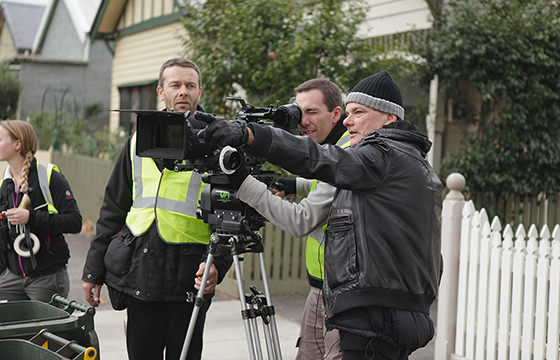
Kelli Cross is spending 10 weeks on attachment with director Rachel Perkins on Jasper Jones, the coming-of-age mystery scripted by Shaun Grant and Craig Silvey and produced by Bunya Productions David Jowsey and Porchlight Films’ Vincent Sheehan.
After the first week of pre-production in Western Australia, Cross observes, “I am learning all sorts from my experience so far and yet I know this is just going to be the tip of the iceberg. The most valuable lessons I will learn will no doubt be the technical aspect of this industry – something that I can only learn ‘on the job’ as I have never had the chance to be formally trained.
“It is unfamiliar territory for me having only worked on scripts that I have written – and I’m digging it. I am hoping that by working with Rachel and the rest of the crew, I am able to gain the confidence that I need to properly ‘own’ the set in future projects as a director.”
Cross is the first Indigenous recipient of the Director’s Attachment Scheme, which launched three years ago, funded by Screen Australia and managed by the ADG. Arguably the practical benefits are more pronounced among the tyro directors on TV dramas as each gets the chance to direct scenes.
Julietta Boscolo spent seven and a half weeks alongside director Geoff Bennett on two episodes of Playmaker Media’s Love Child. She directed two scenes set in Stanton House, the home for unmarried mothers, and Bennett then invited her to direct two further scenes with actors Miranda Tapsell and Andy Ryan.
“Geoff is really open and generous as a director and as directors, we look for similar things in our work,” she says. “So he was the perfect mentor for me to be attached to. Television is very fast-paced and demanding and because I wanted to really observe the shoot in detail, I literally was Geoff’s shadow on set.
“I had a ball. Geoff and I got along very well; I have never laughed so much on a production. The attachment was a great insight into high-end commercial television drama.”
Actor-turned director Christopher Stollery gleaned heaps from spending 12 weeks on series 4 of Playmaker’s House Husbands, mentored by director Grant Brown.
His candid assessment: “Grant has enormous experience in the medium and is an extremely personable and diplomatic chap. He’s adept at negotiating the cast’s idiosyncrasies, the crew’s low-patience threshold for indecision and the feedback from the many-headed executive (network, producers, writer-producers). I felt very welcomed by all at Playmaker and was very flattered by the vote of confidence to direct part of the episode, eight scenes in total.
“I have spent hundreds of hours on set over the course of my career but I’ve had very limited contact with the pre-production and post production processes. This attachment opportunity has successfully demystified the process for me and dispelled any previous concern that I would be capable of taking on the task.”
Playmaker Media executives are great supporters of the scheme. Sue Seeary, the executive producer of House Husbands and Love Child, says, “Julietta and Chris were exposed to the rigours of TV drama production in all aspects of the production cycle, preparation, execution and post and were given parts of the scripts to direct themselves. Let’s hope we all have the opportunity of working together on future projects.”
Beth Armstrong, who is being mentored by Mel Gibson on Hacksaw Ridge, was the first attachment since the ADG committed to have women fill 50% of the attachments and for 75% to reflect both gender equality and cultural diversity.
ADG CEO Kingston Anderson says one of the great benefits of the scheme has been identifying for the first time the next generation of directors from the applicants, a pool of 30-60 rising talents. He is keen to supplement the scheme by arranging for state agencies and private investors to fund up to five attachments each year.
Screen Australia senior development executive Nerida Moora says, “The ADG has wrangled some fantastic opportunities for emerging directors. With the Director’s Attachment Scheme, Enterprise People and the Creative Talent Suite, we are providing multiple doors for attachments and placements. We are also really pleased that the Guild has agreed to 75% in regards to the gender and cultural diversity of the attachments”
Nora Niasari, who was mentored by Emma Freeman on Matchbox Pictures’ drama Secret City commissioned by Foxtel, exemplifies cultural diversity. Born in Iran, she was raised in Australia in a household where Farsi was the only language. “My mother exposed me to Iranian traditions, poetry and cinema from a very young age,” she says. “Iranian cinema made after the 1979 revolution has had a significant influence on my filmmaking sensibilities. In February 2015, I completed a filmmaking workshop with Iranian filmmaker Abbas Kiarostami in Barcelona, whom I consider a mentor and a true master of cinema.”
On Secret City she watched Freeman from script meetings to preparing actors and her visualisation process with DOP Mark Wareham and production designer Felicity Jane Abbott.
“Emma is an actor’s director who works with minimum camera setups and multiple takes, which means she focuses most of her time on crafting performances,” Nora says. “ I learnt a great deal about how to best communicate with actors to achieve the emotional beats of each scene within a limited time frame.”
While none of the scheme’s recipients has yet landed his or first feature directing assignment, the ADG and Screen Australia are confident that will happen soon.
Writer-director Matthew Moore, who was attached to Rob Connolly on Paper Planes, has since directed a short, Problem Play, for Goalpost Pictures, funded by Screen Australia’s Hot Shots: Short Fiction Funding.
Moore, who is developing a feature with Goalpost’s Lauren Edwards, says working with Connolly was a “hugely helpful stepping stone in terms of getting my head around my first feature.” He adds, “It was great watching someone so highly experienced dealing with all the problems and issues that a feature can throw at you.”
Dimitrios Pouliotis spent 18 weeks with director Matt Saville on Madman Production’s A Month of Sundays, from the first week of pre through to final mix. “Matt was fantastic to be around and learn from,” he says. “He was welcoming, open and generous, always finding time to impart his knowledge and experience.
“I learned more in these few months about production processes, rehearsals, importance of communication, cast and crew relationships, decision making, and adaptability, than in all other projects I’ve been involved with.”
After directing numerous TVCs, Ariel Martin was delighted to get the chance to observe Neil Armfield at close hand for eight weeks on Goalpost’s Holding the Man. “Neil could not have been more inclusive,” he says. “He made the whole experience as meaningful as I hoped it would be, and he gave me the opportunity to direct a couple of action shoots during the football sequence. I want to direct features and TV but features are my dream.”
Stephen McCallum relished spending four months with Tony Ayres on Matchbox Pictures’ Cut Snake, starting with a 3-day script workshop in Melbourne. “Tony was very generous and welcoming; he saw the collaboration as a way to get the best out of me,” he says.
That led to McCallum him being hired as second unit director on Endemol Australia’s Gallipoli, directed by Glendyn Ivin. He is now developing a feature for See Pictures and he directed second unit on that company’s science fiction thriller Otherlife, directed by Ben C. Lucas.
Ayres is equally complimentary, describing McCallum as a “genuine talent.” Ayres adds, “We need to promote new talent because it is harder than ever now to get a break.”
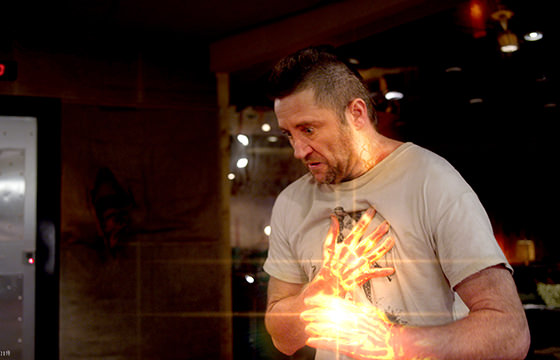
It took a trip to geek mecca San Diego Comic-Con for Robert Mond to realise what his first feature needed to be.
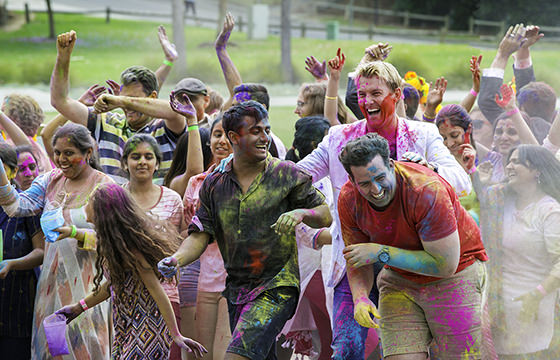
While Lee is the shining beacon for all cricket fans to swarm to, it’s the chemistry and message at the beating (and let’s face it, dancing) heart of unINDIAN that’s really grabbing the spotlight.
Already it’s drawn comparisons to My Big Fat Greek Wedding and Bend It Like Beckham as a cross-cultural romantic comedy. Except that it has something those films don’t: it’s uniquely Australian.
In unINDIAN, Lee takes on his first major film role as Will, an affable bloke who teaches Aussie slang to international students in Sydney (phrases like ‘he’s a tosser’ and the proper way to pronounce ‘maaaaaate’).
In one of the more original meet-cutes of late, he has coloured spice thrown over him by single working mother Meera (Tannishtha Chatterjee) during Holi festival and is almost immediately smitten. But a white man asking an Indian Australian woman out isn’t necessarily as easy as he thought.
Despite Australia’s multicultural make-up, producer Lisa Duff says there actually aren’t that many cross-cultural stories like unINDIAN in Australia.
“There’s still a predominance of stories depicting white Australia on screen,” she says. “We don’t look at that merging of cultures or the humour of what happens from that, especially.”
But it was something the filmmakers of unINDIAN really wanted to tap into.
“As a film professional and as someone who has Indian background… that was one of the driving forces, to show the diversity of 2015 of the streets of Sydney,” Sharma says. “We rarely see that.”
Following premiere screenings throughout the country, the cast and crew have been delighted to hear that unINDIAN is resonating not just with Indian Australians, but Greek Australians, Italian Australians and more.
Lee says: “We had a lot of (people) coming up to us and saying I can actually relate to this, this is what my family’s like.”
The opportunity to tell a cross-cultural story is actually one of the three main reasons Lee decided to take the leap into acting.
The second was that it wasn’t a Bollywood movie, but an Australian story that showed the Indian culture Lee is so passionate about (he’s toured there multiple times as a test cricketer).
And the third reason was that Lee knew he could trust Sharma, having worked with him on a few Bollywood cameos and television commercials.
Although he says he was well aware of his lack of experience on movie sets.
“Everytime I’ve gone onto the cricket field I’ve been as prepared as I possibly can… (and) I said I want exactly the same when we go to film,” Lee said.
So he took a crash course with a couple of “NIDA bigwigs”, as Sharma says, “just to tell Brett and I whether we will have egg on our face or it will happen” and got a big thumbs up.
Lee’s performance is now raising a few eyebrows, but for all the right reasons.
Sharma says it’s one of the things he is hearing most from journalists – how pleasantly surprised they were to see Lee holding his own on the big screen.
But the fast-bowler was always a no-brainer for Sharma. From a director’s perspective, he knew Lee could act and “lights up everything”.
Meanwhile from a financial point of view (Sharma is also a producer), he knew the kind of fan following Lee has.
“‘Brett Lee in his first lead role’ would also grab attention from people (and) you know how hard it is to stand out with all these films releasing every day.”
It’s perhaps not a surprising move from Sharma, who was part of the push to bring Bollywood crew into Australia in 1998, who did the first ad campaign for India by NSW, and who most recently, set up the Australian Indian Film Fund (unINDIAN is their first feature).
“My team and I always get a kick out of doing something new, not for the sake of it, but to enrich Australian film culture,” Sharma said.
“(So) I’m telling all the Indians and the ethnic minorities in Australia, to go and watch the film, and if you don’t, than don’t complain that you don’t see our stories on screen. If people support us then we can do more films like this.”
unINDIAN is in cinemas nationally from Thursday 15 October 2015.
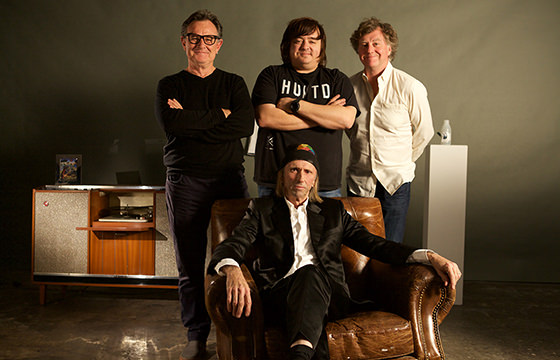
Currently in the early stages of production, the one hour doco is a collaboration between Bombora Film and Music Company director Paul Clarke (responsible for the recent Blood and Thunder story of the Albert music label) and Scott Nowell and Scott Dettrick from The Monkeys, an award-winning Sydney advertising agency.
Dettrick, formerly a Mambo art director, is the documentary’s production designer, creating individual Mambo-themed visual installations for each of the film’s interviewees. Nowell, who has written and directed short films, took his enthusiasm for Clarke’s music docos to the next level and is now his co-writer and producer. Crucially, Mental As Anything musician and artist Reg Mombassa, who started designing T-shirts for the company in 1986 and became its most high profile creative force, is involved musically and editorially. Clarke describes him as “Mambo’s Barry Humphries or Hieronymus Bosch.”
As its cheekily provocative name suggests, the project matches Mambo’s own tone and style. But it also reflects the genuinely subversive nature of the brand’s imagery. In their own words, they’re ‘the bastard children of surf culture’.
The doco outline describes Mambo as ‘an anarcho syndicalist collective of stirrers and modern mystics which went from a garage in East Sydney to becoming a much loved institution of ratbaggery. It became a $100M international clothing business presenting a manifesto of concepts and cartoons attacking hypocrisy, politicians and organised religion and promoting Australian eccentricity to the world…’
“You can imagine how thrilled I was when the proposal came across my desk,” says ABC Executive Producer Jo Chichester. “It’s a meaty, no-brainer David and Goliath story of Australians punching above their weight, drawing on fashion , visual arts and music and also plays with form.”
Rather than telling the story of Mambo in a traditional linear fashion, Clarke has adopted a less conventional, more ambitious multi point of view narrative structure, in the style of Japanese classic Rashomon. “That will help express divergent opinions of what was going on” he says. “All the key players see it slightly differently.”
Writer/ actor Adam Zwar will narrate, with a sound track of new wave and pub rock sounds from bands like The Sunnyboys, Lubricated Goat and Radio Birdman.
Mambo: Art Irritates Life will screen on ABC TV and iView next year as part of a new series of documentaries under the Artsville banner, which began on ABC TV on September 10th, 2015.
Chichester says: “The series features blue chip docos and screen in a 9.30pm slot in a one hour format, which gives shows greater visibility and impact than the 10 pm half hour could. This film is perfect for reaching a broad audience that might not define itself as typically arts viewers.”
Fortunately, (Reg) Mombassa has kept an archive of the original artworks of iconic images such as the Australian Jesus and the Beer Tree from the label’s early days. So have enthusiasts and collectors, including T shirt curator – surely a first in documentary credits – Eddie Zammit, co-curator of Thirty Years of Shelf Indulgence Mambo exhibition at the National Gallery of Victoria in 2014.
“I think Jack Nicholson was spotted in a pair of Mambo shorts,” says Mombassa, adding “I made a suit once for Johnny Rotten.”
He still sounds a little nonplussed by the moment that is the film’s climax: the 2000 Sydney Olympic Games Opening Ceremony featuring the bizarre creatures conceived by Mombassa.
“I was sceptical when Dare Jennings (the label’s founder) approached me to do the athlete’s uniforms and the show because I thought it was too straight and mainstream. In a sense it did backfire because it meant that after that, we stopped being cool with young boys: they saw too many of their fat uncles wearing our shirts at barbecues,” he laughs.
But the label was a laboratory for a generation of graphic talent since the days when Mombassa and fellow artist Paul Worstead and Richard Allen first dreamed up iconic farting dogs as their antidote to the Ken Done/ Paul Hogan version of Australia.
“To me Mambo is quintessential Sydney,” says Clarke. “It’s the city of Martin Sharpe and Arthur Stace – a very graphic place.”
Another of its most appealing aspects for Clarke is its relevance: “It’s about a time when brands were not as visible as they are today. Certainly, very few Australian brands registered globally with the same cultish impact. What makes this one unique is that it started as an art movement that the public took on and wore proudly, as it became more political and championed issues. You could say Mambo was the rebel yell of individualism!”